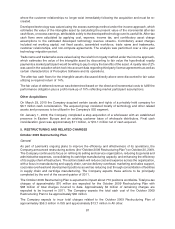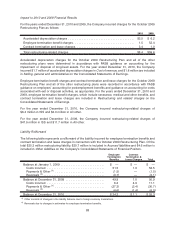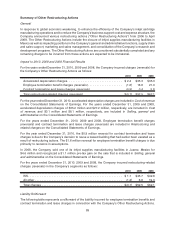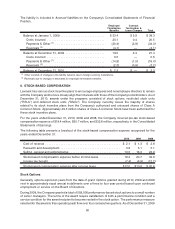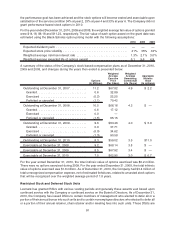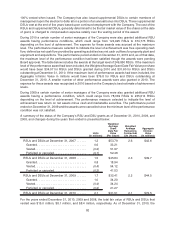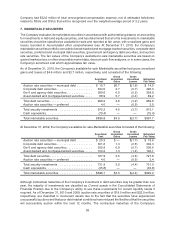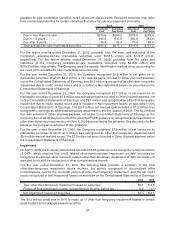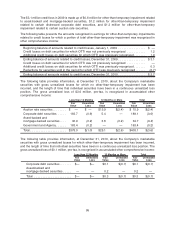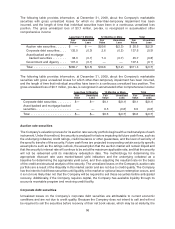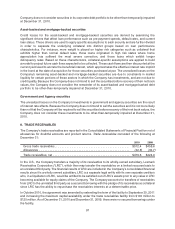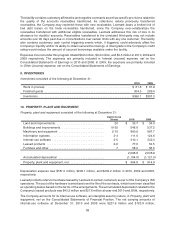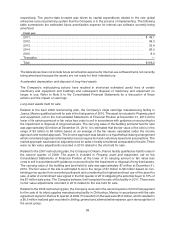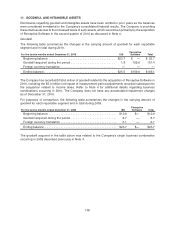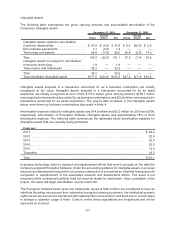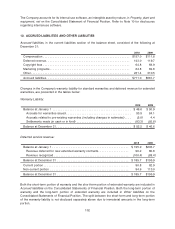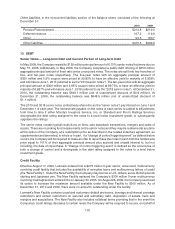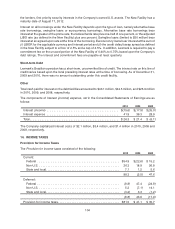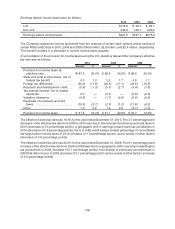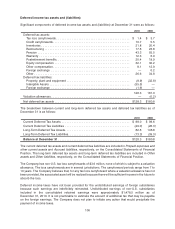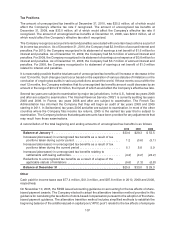Lexmark 2010 Annual Report Download - page 103
Download and view the complete annual report
Please find page 103 of the 2010 Lexmark annual report below. You can navigate through the pages in the report by either clicking on the pages listed below, or by using the keyword search tool below to find specific information within the annual report.
Company does not consider securities in its corporate debt portfolio to be other-than-temporarily impaired
at December 31, 2010.
Asset-backed and mortgage-backed securities
Credit losses for the asset-backed and mortgage-backed securities are derived by examining the
significant drivers that affect loan performance such as pre-payment speeds, default rates, and current
loan status. These drivers are used to apply specific assumptions to each security and are further divided
in order to separate the underlying collateral into distinct groups based on loan performance
characteristics. For instance, more weight is placed on higher risk categories such as collateral that
exhibits higher than normal default rates, those loans originated in high risk states where home
appreciation has suffered the most severe correction, and those loans which exhibit longer
delinquency rates. Based on these characteristics, collateral-specific assumptions are applied to build
a model to project future cash flows expected to be collected. These cash flows are then discounted at the
current yield used to accrete the beneficial interest, which approximates the effective interest rate implicit
in the bond at the date of acquisition for those securities purchased at par. The unrealized losses on the
Company’s remaining asset-backed and mortgage-backed securities are due to constraints in market
liquidity for certain portions of these sectors in which the Company has investments, and are not due to
credit quality. Because the Company does not intend to sell the securities before recovery of their net book
values, the Company does not consider the remainder of its asset-backed and mortgage-backed debt
portfolio to be other-than-temporarily impaired at December 31, 2010.
Government and Agency securities
The unrealized losses on the Company’s investments in government and agency securities are the result
of interest rate effects. Because the Company does not intend to sell the securities and it is not more likely
than not that the Company will be required to sell the securities before recovery of their net book values, the
Company does not consider these investments to be other-than-temporarily impaired at December 31,
2010.
8. TRADE RECEIVABLES
The Company’s trade receivables are reported in the Consolidated Statements of Financial Position net of
allowances for doubtful accounts and product returns. Trade receivables consisted of the following at
December 31:
2010 2009
Gross trade receivables . . . . . . . . . . . . . . . . . . . . . . . . . . . . . . . . . . . . . . . . . . . . $512.4 $458.6
Allowances . . . . . . . . . . . . . . . . . . . . . . . . . . . . . . . . . . . . . . . . . . . . . . . . . . . . . (32.8) (33.7)
Trade receivables, net . . . . . . . . . . . . . . . . . . . . . . . . . . . . . . . . . . . . . . . . . . . . . $479.6 $424.9
In the U.S., the Company transfers a majority of its receivables to its wholly-owned subsidiary, Lexmark
Receivables Corporation (“LRC”), which then may transfer the receivables on a limited recourse basis to
an unrelated third party. The financial results of LRC are included in the Company’s consolidated financial
results since it is a wholly owned subsidiary. LRC is a separate legal entity with its own separate creditors
who, in a liquidation of LRC, would be entitled to be satisfied out of LRC’s assets prior to any value in LRC
becoming available for equity claims of the Company. The Company accounts for transfers of receivables
from LRC to the unrelated third party as a secured borrowing with the pledge of its receivables as collateral
since LRC has the ability to repurchase the receivables interests at a determinable price.
In October 2010, the agreement was amended by extending the term of the facility to September 30, 2011
and increasing the maximum capital availability under the trade receivables facility from $100 million to
$125 million. As of December 31, 2010 and December 31, 2009, there were no secured borrowings under
the facility.
97


